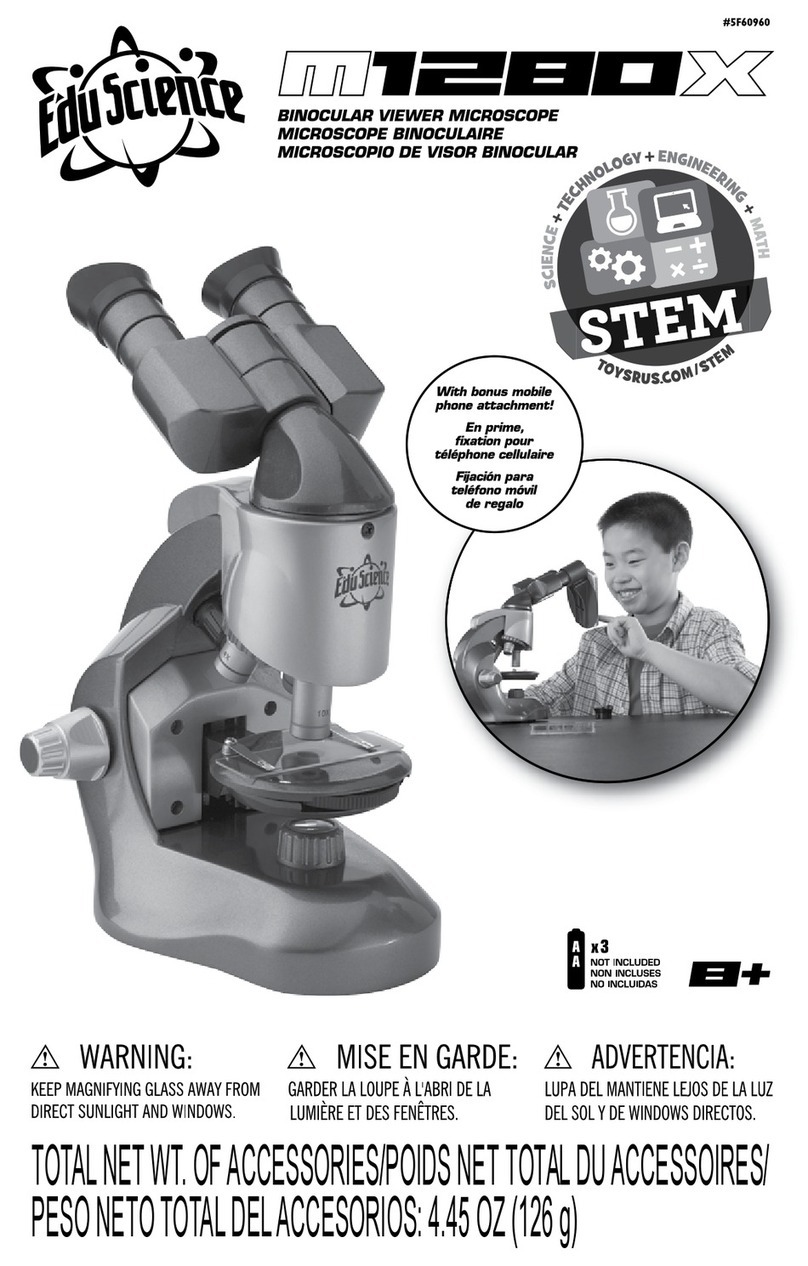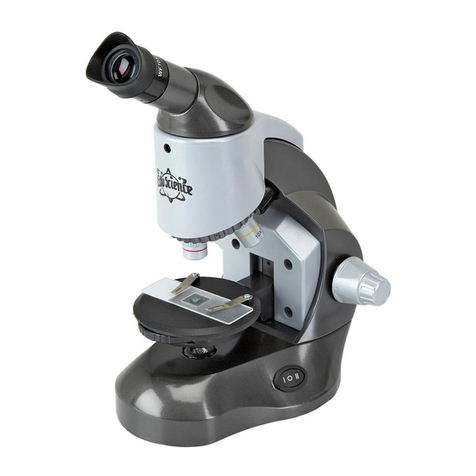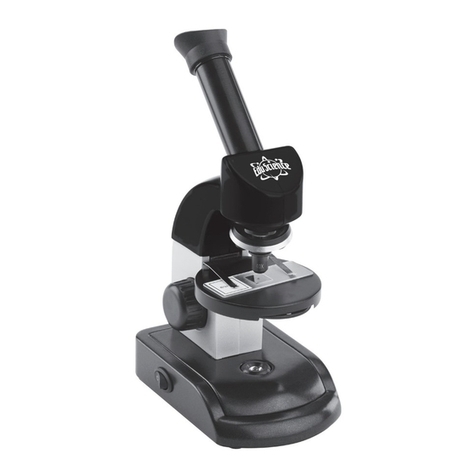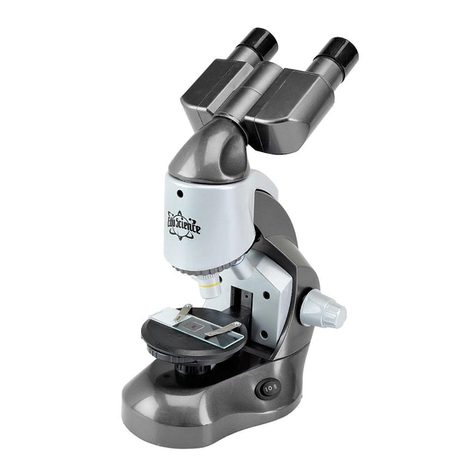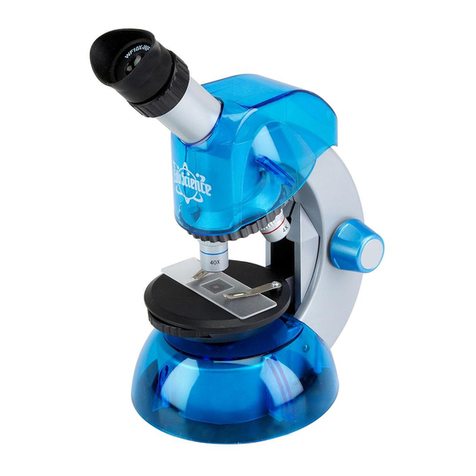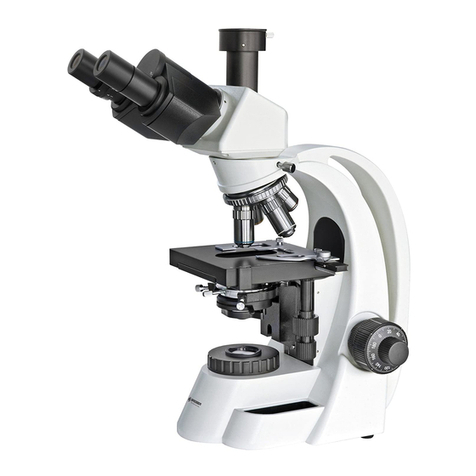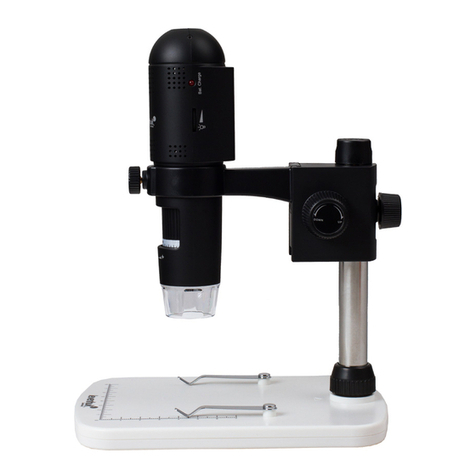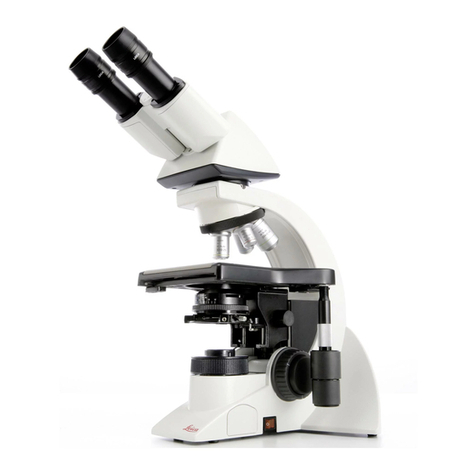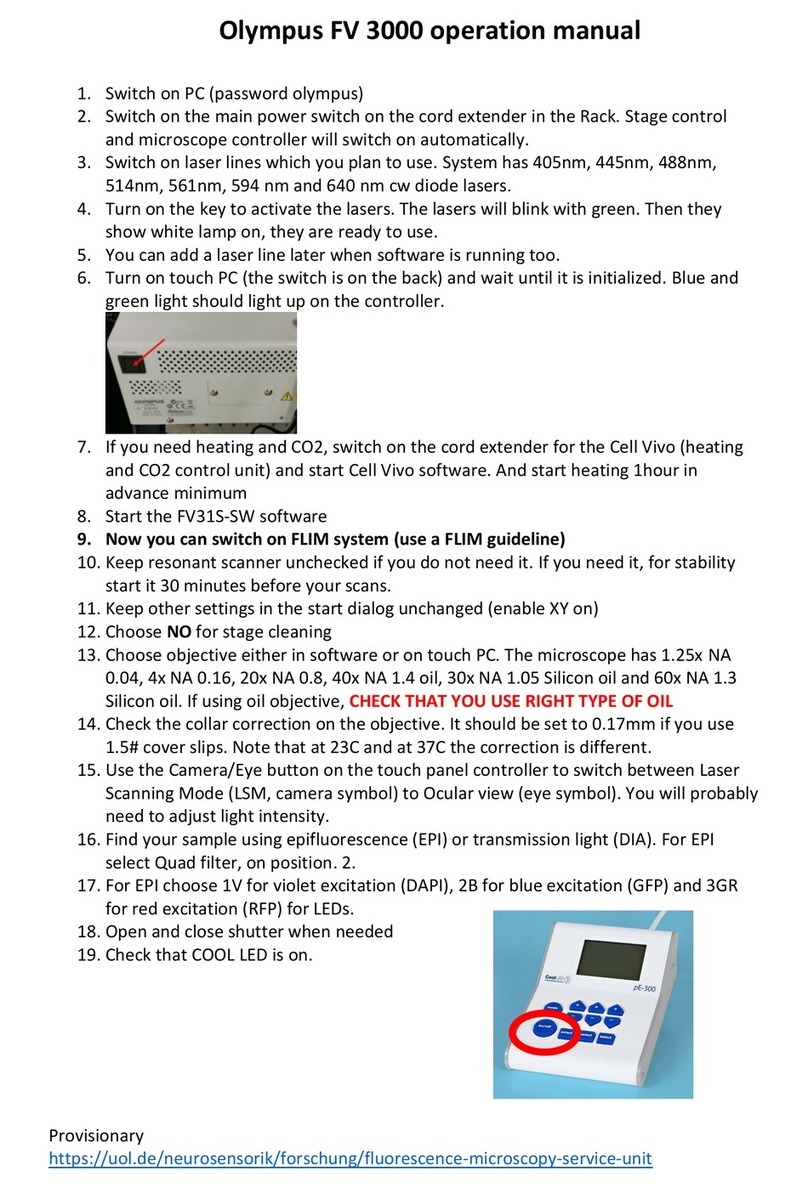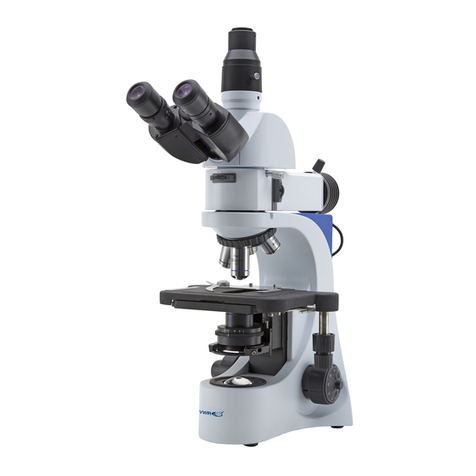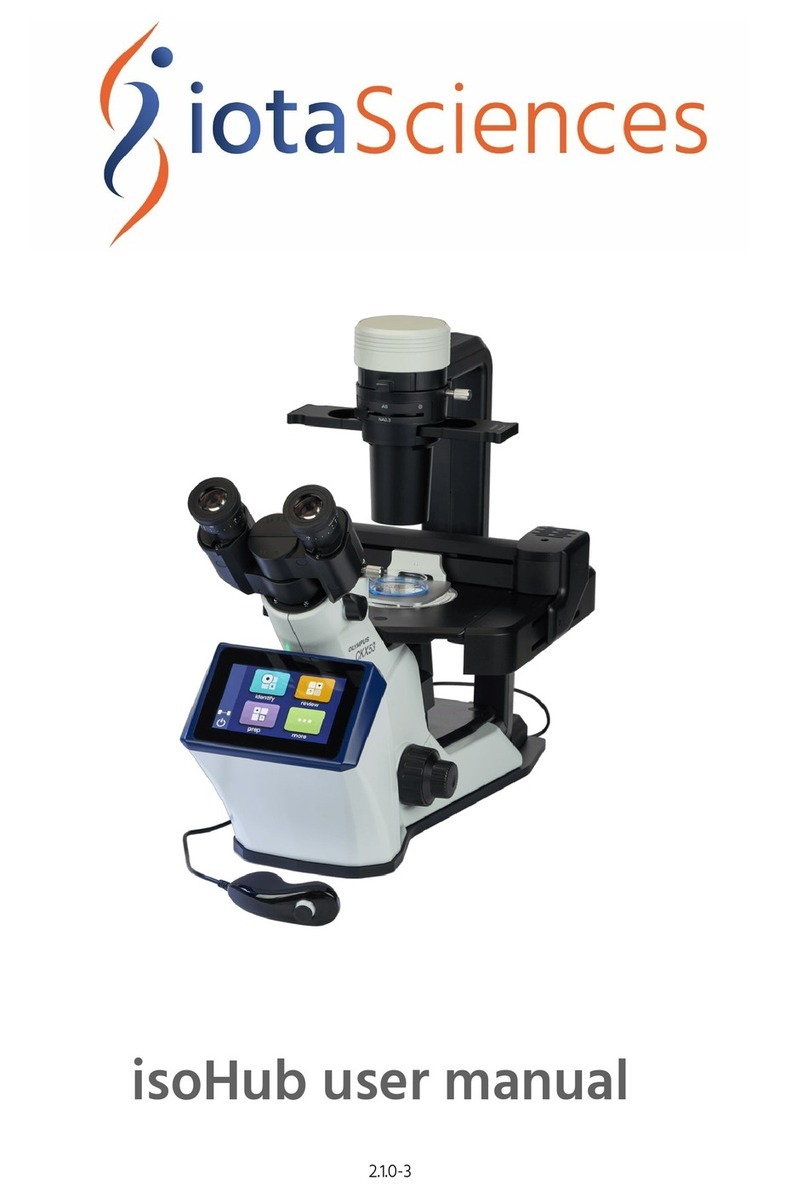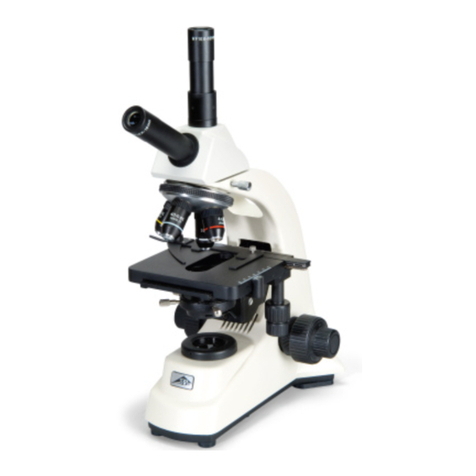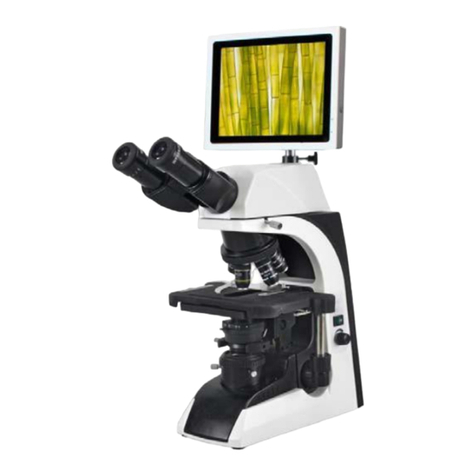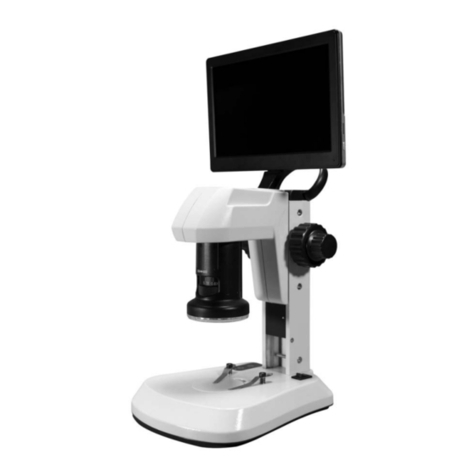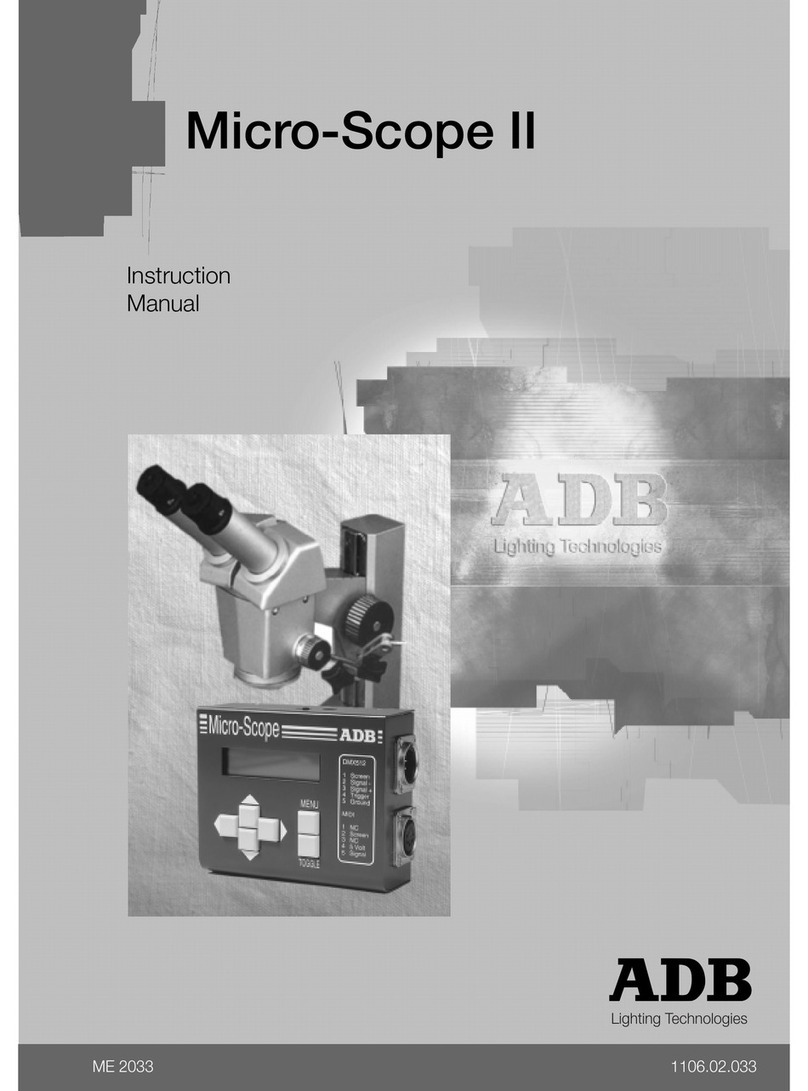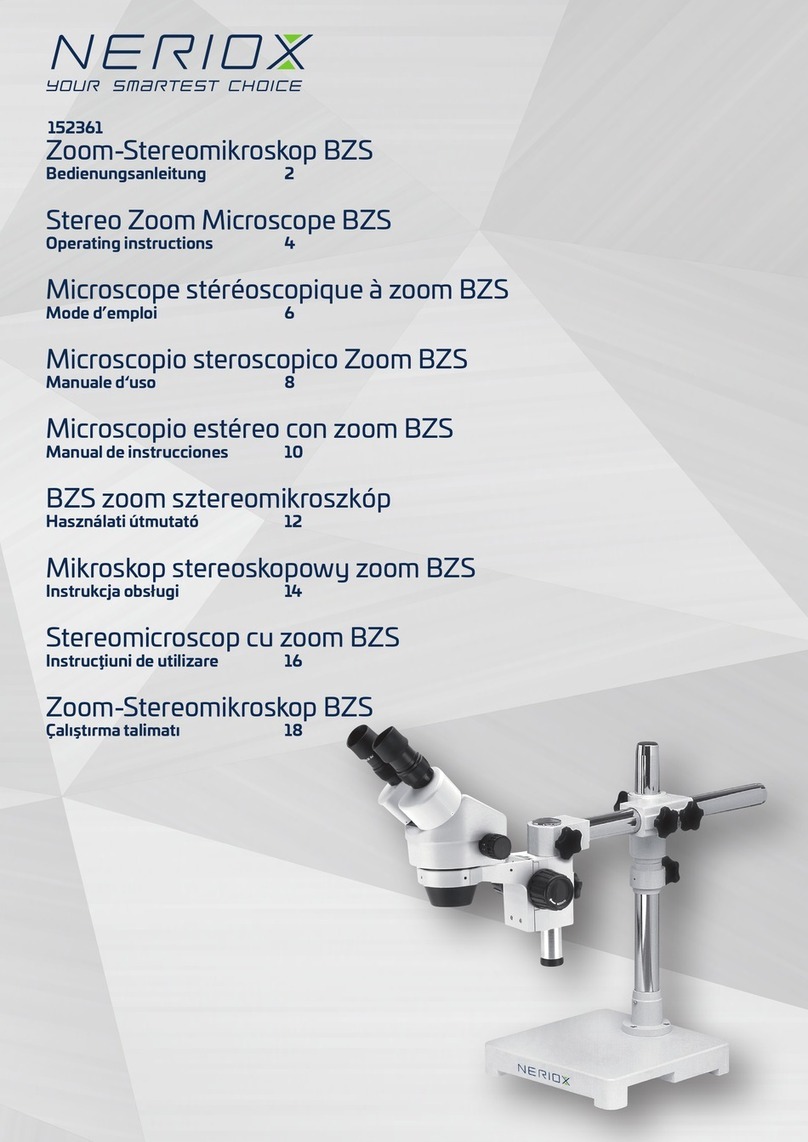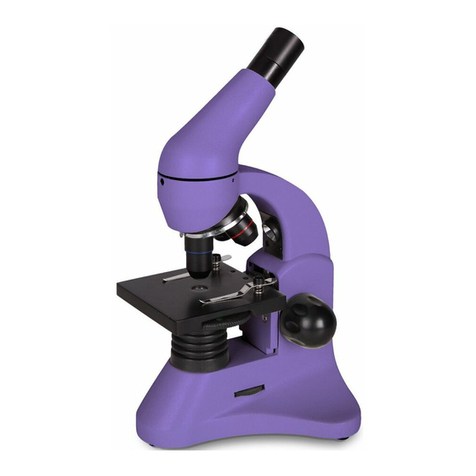Edu Science SMART SLIDES ACTIVITY KIT User manual

SMART SLIDES™ ACTIVITY KIT
TROUSSE DE LAMES INTELLIGENTES
JUEGO DE ACTIVIDADES PORTAOBJETOS INTELIGENTE
Instruction manual
Manuel détaillé
Manual de instrucciones
Contiene puntas y bordes funcionales afilados.
Lupa del mantiene lejos de la luz del sol y de windows directos.
ADVERTENCIA:
Contains functional sharp points and edges.
Keep magnifying glass away from direct sunlight and windows.
WARNING:
Contient des pointes aigües et des bords coupants.
Garder la loupe à l'abri de la lumière et des fenêtres.
MISE EN GARDE:
TOTAL NET WT. OF ACCESSORIES/POIDS NET TOTAL DU ACCESSOIRES/PESO NETO TOTAL DEL ACCESORIOS: 7.05 OZ (200 g)

Introduction
Here are a few tips about how to take a
better look at the wonderful world of
microorganisms and crystals. You will
learn how to prepare your object so that
you can look at it under a microscope.
The numerous experiments described
should make you curious and want to
use your microscope more.
QR Codes
The 21 slides come with a QR (quick
response) code printed on them. These
QR codes can be used to access our
website which is handy for gathering
more information regarding the slide
you’re working with. After downloading
your QR code reader from your app
store, simply point your mobile device at
the QR code and you will be automatically
taken to a web page with more information
for that slide.
1
Experiment Instructions
WARNING!
• Keep chemicals and corrosive
liquids out of the reach of children.
• Do not ingest any chemicals.
• Wash your hands thoroughly with
soap under running water after use.
• Not suitable for children under 3 years
of age.
• Contains functional sharp points and
edges.
Accessories in this experimental kit may
have sharp edges and tips. Please store
the device and all of its accessories and
aids out of the reach of young children
when not being used due to a risk of
injury.
DISPOSAL
Keep packaging materials, like plastic
bags and rubber bands, away from children,
as they pose a risk of suffocation.
Dispose of packaging materials as legally
required. Consult the local authority on
the matter if necessary.
Contents
• 21 Prepared slides
• 7 Blank slides with labels & covers
• Slide carrying case
• Magnifying glass
• Needle rod
• Pipette
• Tweezers
• Scalpel
• Petri dish
• Red dye
• Blue dye
• 7 Vials of specimens
• Instruction manual
21

2
Objects to Observe
With a magnifying glass, you can look at
non-transparent (i.e. opaque) objects like
small animals, parts of plants and tissues.
When you use a magnifying glass, light
falls onto the object and is reected back
through the magnifying lens and into your
eye. With your microscope, however, you
can observe transparent objects. The light
from the lamp goes through the opening
on the stage and through your prepared
specimen. Then, it passes through the
objective, the body of the microscope,
the eyepiece, and travels into your eye.
In this way, the microscope is only meant
for observing transparent objects. Many
microorganisms in water, parts of plants,
and the tiniest animal parts are naturally
transparent. To observe opaque objects
under the microscope, we must make
them transparent. We may make them
transparent through a treatment or penet-
ration with the right materials (media), or by
taking the thinnest slices from them (using
a specimen slicer), and then examine
them. Below you‘ll nd out how to do this.
How to Produce Thin Specimen Slices
WARNING:
Only do this with an adult’s supervision.
Ask your parents to help you. As already
mentioned, you need to get the thinnest
slices possible from an object so that
they are transparent and can be looked
at under the microscope. First, get a
candle and place it in an old pot, then
heat it on the stovetop until the wax becomes
liquid. Now, use tweezers to dip the
object in the liquid wax a few times. Be
careful, the wax is very hot! After each
dip, allow the wax to harden before you
dip the object into the wax again. When
the wax around the object has hardened
completely, you can use the specimen
slicer (not included) to cut it into thin
slices. Place these slices on a slide and
cover them with a cover slip.
The Production of Specimens
There are two basic types of specimens:
permanent specimens and short-term
specimens.
Short-term Specimens
Short-term specimens are produced from
objects that you want to look at, but don’t
want to keep in your specimen collection.
These specimens are only meant to be
observed for a short period of time, after
which they are disposed of. For short-term
specimens, place the object on the slide
and place a cover slip on top of it. After
looking at the object, clean the slide and
cover slip, disposing of the specimens.
One of the secrets of successful observation
with a microscope is the use of clean slides
and cover slips. Spots or stains will distract
you when looking at an object.
Permanent Prepared Specimens
Permanent prepared specimens are
produced from objects that you would like
to look at again and again. The preparation
of dry objects (e. g. pollen or the wings of
a y) can only be done with special glue
(gum media). You’ll nd such glue at a
local hobby store or online, identied as
“gum media.” Objects that contain liquid

3
must rst have the liquid taken out of
them before they can be prepared as
permanent specimens.
How to Prepare a Dry Object
First, place the object in the middle of a
clean slide and cover it with a drop of glue
(gum media). Then place a cover slip on
top of the object and glue. Lightly press
the cover slip, so that the glue spreads to
the edges. Let the specimen harden for
2-3 days before observing it.
How to Prepare a Smear Specimen
For a smear specimen, place a drop of
the liquid to be observed (e.g. water from
a puddle in the forest) on the end of the
slide using a pipette. Then smear the
liquid across the slide with the help of a
second slide. Before observing, let the
slides dry together for a few minutes.
Experiments
Experiment No. 1:
Black and White Print
Objects:
1. A small piece of paper from a
newspaper with a black and white
picture and some text,
2. A similar piece of paper from a magazine.
In order to observe the letters and the
pictures, produce a short-term slide from
each object. Now, set your microscope
to the lowest magnication and use the
specimen from the newspaper. The
letters on the newspaper look frayed
and broken, since they are printed on
raw, low-quality paper. The letters on
the magazine look smoother and more
complete. The pictures in the newspaper
are made up of many tiny dots, which
appear slightly smudgy. The pixels (half-
tone dots) of the magazine picture are
clearly defined.
Experiment No. 2:
Color Print
Objects:
1. A small piece of color printed newspaper,
2. A similar piece of paper from a magazine.
Make short-term specimens from the
objects and observe them with the lowest
magnication. The colored halftone dots of
the newspaper often overlap. Sometimes,
you‘ll even notice two colors in one dot. In
the magazine, the dots appear clear and
rich in contrast. Look at the different sizes
of the dots.
Experiment No. 3:
Textile Fibers
Objects and accessories:
1. Threads from various fabrics(e.g. cotton,
linen, wool, silk, rayon, nylon, etc.),
2. Two needles.
Each thread is placed on a slide and frayed
with the help of the two needles. Next, wet
the threads and cover them with a cover
slip. Set the microscope to one of the lower
magnications. Cotton bers come from
a plant, and look like a at, twisted ribbon
under the microscope. The fibers are
thicker and rounder at the edges than in
the middle. Cotton bers are basically long,
collapsed tubes.
Linen bers also come from a plant, and
they are round and run in one direction.
The bers shine like silk and exhibit count-

4
less bulges on the thread. Silk comes
from an animal and is made up of solid
bers that are small in diameter, in con-
trast to the hollow plant-based bers.
Each ber is smooth and even and looks
like a tiny glass tube. The bers of the
wool also come from an animal. The sur-
face is made of overlapping sleeves that
look broken and wavy. If possible, com-
pare wool from different weaving mills.
In doing so, take a look at the different
appearance of the bers. Experts can
determine which country the wool came
from by doing this. Rayon is a synthetic
material that is produced by a long che-
mical process. All the bers have solid,
dark lines on the smooth, shiny surface.
After drying, the bers curl into the same
position. Observe the differences and
the similarities.
Experiment No. 4:
Table Salt
Object: normal table salt.
First, place a few grains of salt on a sli-
de and observe the salt crystals with the
lowest setting of your microscope. The
crystals are tiny cubes and are all the
same shape.
Experiment No. 5:
Production of Salt Crystals
Objects and accessories:
1. Table salt
2. Test tube lled halfway with
warm water to dissolve salt,
3. Cotton thread,
4. Paper clips,
5. Matchstick or pencil.
Add salt to the water until it no longer
dissolves. We now have a saturated salt
solution. Wait until the water has cooled.
Fix a paper clip to the end of the cotton
thread. The paper clip serves as a weight.
Tie the other end of the cotton thread into
a knot, stick the match through and dip
the end with the paper clip in the salt
solution. Place the match horizontally on
top of the test tube. It prevents the cot-
ton thread from slipping all the way down
into the test tube. Now, place the tube in
a warm place for 3-4 days. If you take a
look at the glass after a few days under
the microscope, you can see that a little
colony of salt crystals has formed on the
cotton thread.
Experiment No. 6:
How do You Raise Brine Shrimp?
Accessories (from your microscope set):
1. Shrimp eggs
2. Sea salt,
3. Hatchery,
4. Yeast. (not included)
Brine shrimp, or “Artemia Salina”, as they
are called by scientists, have an unusual
and interesting life cycle. The eggs pro-
duced by the female are hatched without
ever being fertilized by a male shrimp. The
shrimp that hatch from these eggs are all
females. In unusual circumstances, e.g.
when the marsh dries up, the male shrimp
can hatch. These males fertilize the eggs
of the females and from this mating, spe-
cial eggs come about. These eggs, so-
called “winter eggs,” have a thick shell,
which protects them. The winter eggs are
very resistant and capable of survival if the
marsh or lake dries out, killing off the entire
shrimp population. They can exist for 5-10
years in a “sleep” status. The eggs hatch

5
when the proper environmental con-
ditions are reproduced. These are the
type of eggs you have in your micro-
scope set.
The Incubation of the Brine Shrimp
In order to incubate the shrimp, you
rst need to create a salt solution that
corresponds to the living conditions of
the shrimp. For this, put a half liter of
rain or tap water in a container. Let the
water sit for approx. 30 hours. Since
the water evaporates over time, it is
advisable to ll a second container
with water and let it sit for 36 hours.
After the water has sat stagnant for
this period of time, add half of the in-
cluded sea salt to the container and
stir it until all of the salt is dissolved.
Now, put a few eggs in the container
and cover it with a dish. Place the
glass container in a bright location,
but don‘t put it in direct sunlight. Since
you have a hatchery, you can also add
the salt solution along with a few eggs
to each of the four compartments of
the tank. The temperature should be
around 25º. At this temperature, the
shrimps will hatch in about 2-3 days. If the
water in the glass evaporates, add some
water from the second container.
The Brine Shrimp under the Microscope
The animal that hatches from the egg is
known by the name “Nauplius Larva”. With
the help of a pipette, you can place a few of
these larvae on a glass slide and observe
them. The larvae will move around in the
salt water by using their hair-like appenda-
ges. Take a few larvae from the container
each day and observe them under the mi-
croscope. In case you’ve hatched the lar-
vae in a hatchery, simply take off the cover
of the tank and place the tank on the stage.
Depending on the room temperature, the
larvae will be mature in 6-10 weeks. Soon,
you will have had raised a whole genera-
tion of brine shrimp, which will constantly
grow in numbers.
Feeding your Brine Shrimp
In order to keep the brine shrimp alive, they
must be fed from time to time, of course.
This must be done carefully, since over-
feeding can make the water become foul and
poison our shrimp population. The feeding is
done with dry yeast in powdered form. A little
bit of this yeast every second day is enough.
If the water in the compartments of the hat-
chery or your container turns dark, that is a
sign that it is gone bad. Take the shrimp out
of the water right away and place them in a
fresh salt solution.
Warning! The shrimp eggs and the shrimp
are not meant to be eaten!
Experiment No. 7:
How does bread mold develop?
Object: An old piece of bread.
Put the bread on a slide and lightly moisten
it with water. Place the bread into a sealed
container, and keep it warm and out of harsh
light. Within a short time, the black bread
mold forms. When the mold takes on a white,
shining appearance, observe it with your mi-
croscope. It will look like a complicated mass
of thread, forming the fungus body, which is
called the mycelium. Each thread is known
as a hypha. These threads, or hyphae, grow
like long, slim stacks, ending in a small, white
ball, called a sporcap. Inside the sporcap is

6
a spore that will eventually be released
to start new colonies of mold. With your
microscope you can watch this amazing
transformation unfold.
Experiment No. 8:
Observing stem and root sections
Objects:
1. A celery stalk.
2. A carrot.
Cut several very thin slices from the middle
of the celery (a stem) and from the middle
of the carrot (a root). Make a “wet mount”
by placing a drop of water on the slide.
Then put the specimen on the water-co-
vered slide, and top with a cover slip. The
water will help support the sample. It also
lls in the space between the cover slip
and the slide. Start by viewing them at the
lowest magnication and then increase the
magnication for more detailed observation.
Experiment No. 9:
Observing cork cells
Object: A small cork
With an adult’s supervision, cut a very thin
slice from the cork, the thinner the better.
Prepare a wet mount of this cork slice as
you did with the celery and carrot in Ex-
periment 8. When applying the cover slip
over the slide, the water and the cork,
make sure no air bubbles are trapped
beneath it. Begin with the lowest power
and increase the magnication as desi-
red. The cells you see, called lenticels,
are actually the air pockets that have
been left after the plant material inside
has died.
Experiment No. 10:
Observing leaf cells
Objects: A fresh leaf, clean and dry, wit-
hout holes or blemishes
With an adult’s supervision, cut a one-
inch cross section out of the center of
the leaf, from one side of the leaf to the
other. Tightly roll that section up starting
from one uncut edge of the leaf. The cen-
tral vein of the leaf will be in the center
of the roll and not be visible. Then make
several very thin slices off one end of the
roll. The central vein will be in the middle
of this almost transparent slice. You’ll be
observing the cells around that central
vein. Using a droplet of water, make a
wet mount (as in Experiments 8 and 9),
placing the leaf segment so that the inner
part faces up. Start with the lowest power
and gradually increase the magnication
for more detail.
Product Manual Visit
www.exploreone.com/pages/product-manuals

#5F6119A
EDU SCIENCE IS A MARK OF (EST UNE MARQUE DE/ES UNA MARCA DE) GEOFFREY, LLC, A SUBSIDIARY OF (UNE FILIALE DE/UNA SUBSIDIARIA DE) TOYS“R”US, INC.
© 2016 GEOFFREY, LLC
MADE IN CHINA (FABRIQUÉ EN CHINE/FABRICADO EN CHINA)
DISTRIBUTED IN THE UNITED STATES BY (DISTRIBUÉ AUX ÉTATS-UNIS PAR/DISTRIBUIDO EN LOS ESTADOS UNIDOS POR)
TOYS“R”US, INC., WAYNE, NJ 07470
IMPORTED BY (IMPORTÉ PAR/IMPORTADO POR)
TOYS“R”US (CANADA) LTD. (LTÉE),
2777 LANGSTAFF ROAD, CONCORD, ON L4K 4M5
DISTRIBUTED IN AUSTRALIA BY (DISTRIBUÉ EN AUSTRALIE PAR/
DISTRIBUIDO EN AUSTRALIA POR) TOYS“R”US (AUSTRALIA (AUSTRALIE)) PTY LTD.(LTÉE), REGENTS PARK NSW 2143
www.toysrus.com www.toysrus.ca
Contents and colors may vary.
Le contenu et les couleurs peuvent varier.
El contenido y los colores pueden variar.
Other Edu Science Microscope manuals
